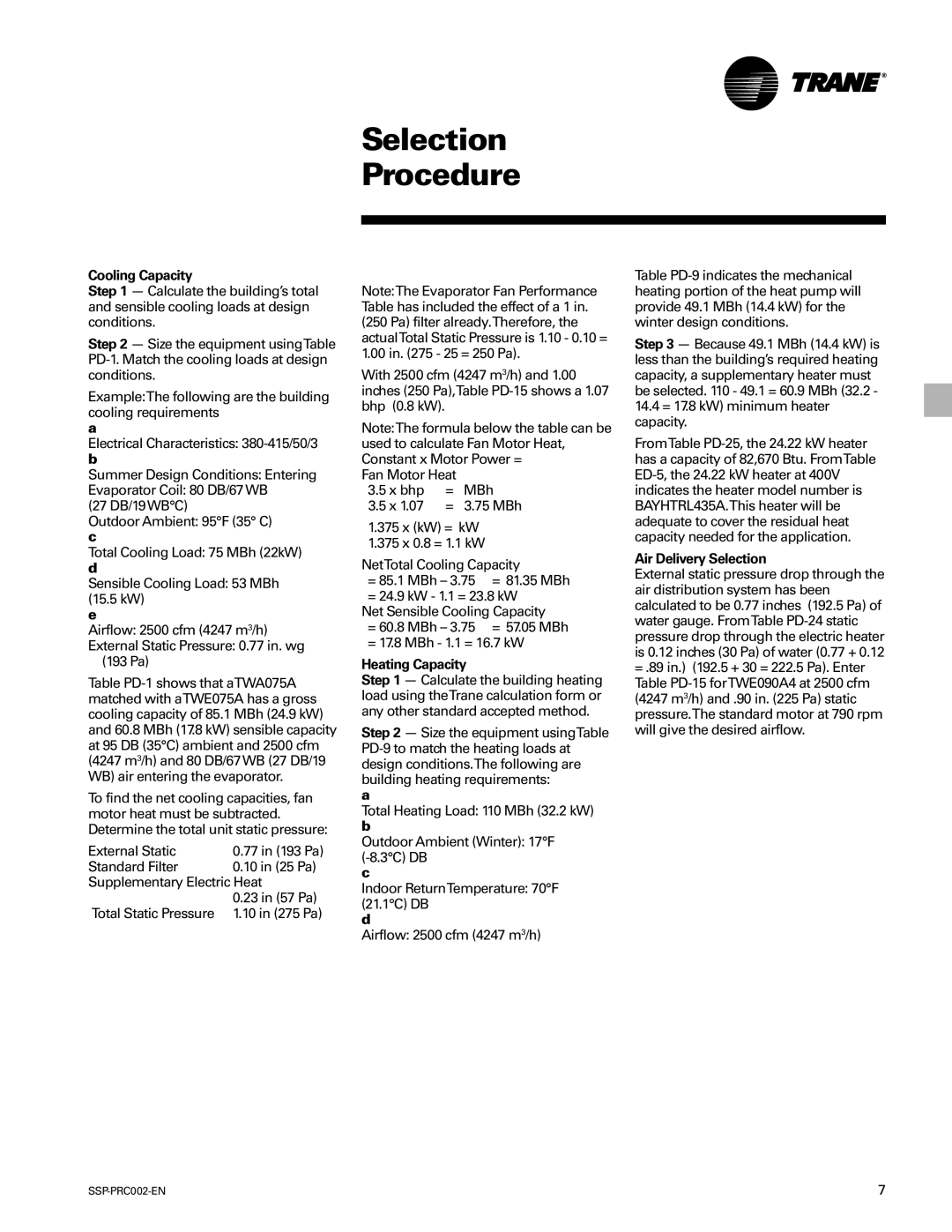TWA200B, TWA075A, TWE200B, TWE050A specifications
Trane has a long-standing reputation for manufacturing high-efficiency heating, ventilation, and air conditioning (HVAC) systems. Among their impressive lineup are the Trane TWA200B, TWE050A, TWA075A, and TWE200B models, each designed with advanced technologies that cater to various residential and commercial needs.The Trane TWA200B is a powerful 2-ton air handler equipped with a variable-speed blower that enhances energy efficiency and provides consistent airflow. With a compact design, it fits well in tight spaces while delivering superior indoor comfort. One of its notable features is its compatibility with Trane's ComfortLink II Zoning System, allowing for customized temperature control in different zones of a building. This model is optimized for use with high-efficiency heat pumps and has enhanced filtration options that improve indoor air quality by trapping dust, pollen, and other allergens.
The TWE050A is a 5-ton packaged air conditioning unit that integrates both cooling and heating capabilities. This model is particularly praised for its high SEER (Seasonal Energy Efficiency Ratio) rating, which indicates superior energy efficiency and reduced operational costs. The TWE050A utilizes Trane's proprietary Spine Fin coil technology, which maximizes surface area for better heat exchange and overall efficiency. Its durable construction ensures long-lasting performance in various weather conditions, making it ideal for both residential and light commercial applications.
The TWA075A is a versatile 7.5-ton air handler designed for larger spaces. It features a robust construction and is equipped with a multi-speed blower that can be adjusted to meet specific airflow requirements, ensuring optimal comfort. This model is notable for its sound attenuation features, which minimize operational noise, making it suitable for quiet environments. Additionally, the TWA075A supports advanced thermostat compatibility, enabling users to maintain precise control over indoor temperatures.
Finally, the TWE200B stands out as a 20-ton packaged rooftop unit, making it an excellent choice for extensive commercial applications. Its advanced compressor technology ensures effective cooling and heating while maintaining high energy efficiency. The TWE200B includes enhanced connectivity options, allowing for remote monitoring and control through smart devices. This model also incorporates Trane's Integrated Comfort System, which streamlines operation and simplifies maintenance tasks.
Overall, the Trane TWA200B, TWE050A, TWA075A, and TWE200B models embody the company's commitment to quality, innovation, and energy efficiency, making them excellent choices for a wide array of HVAC applications.

